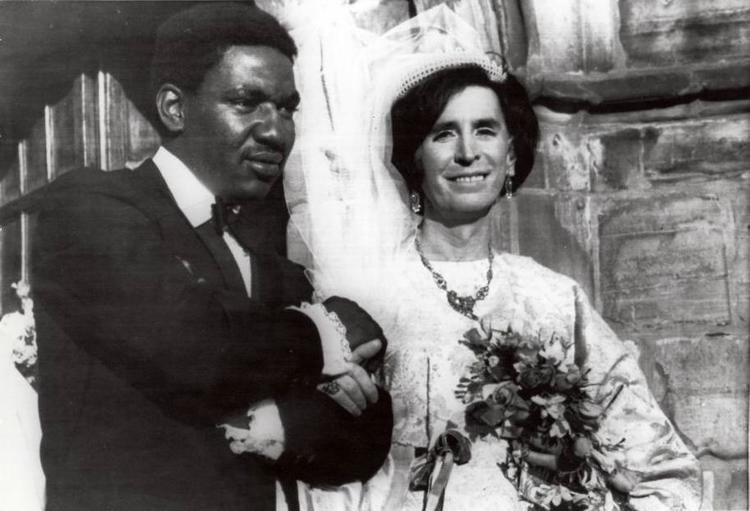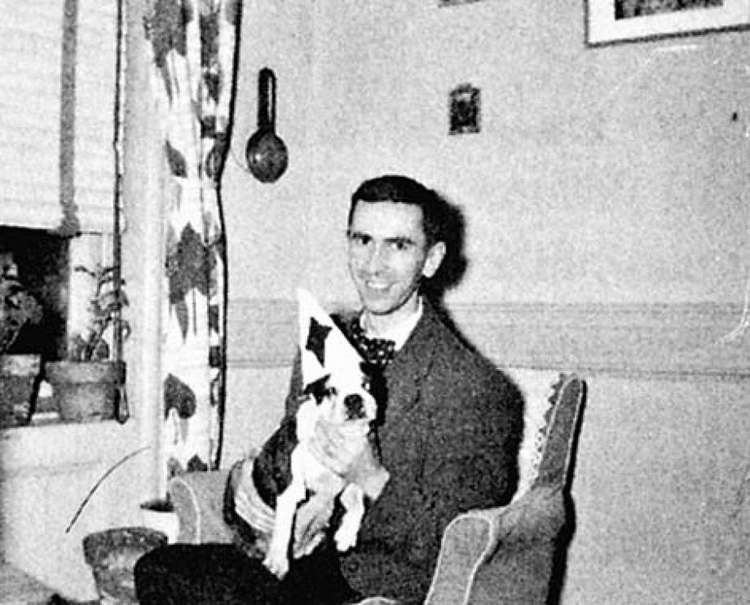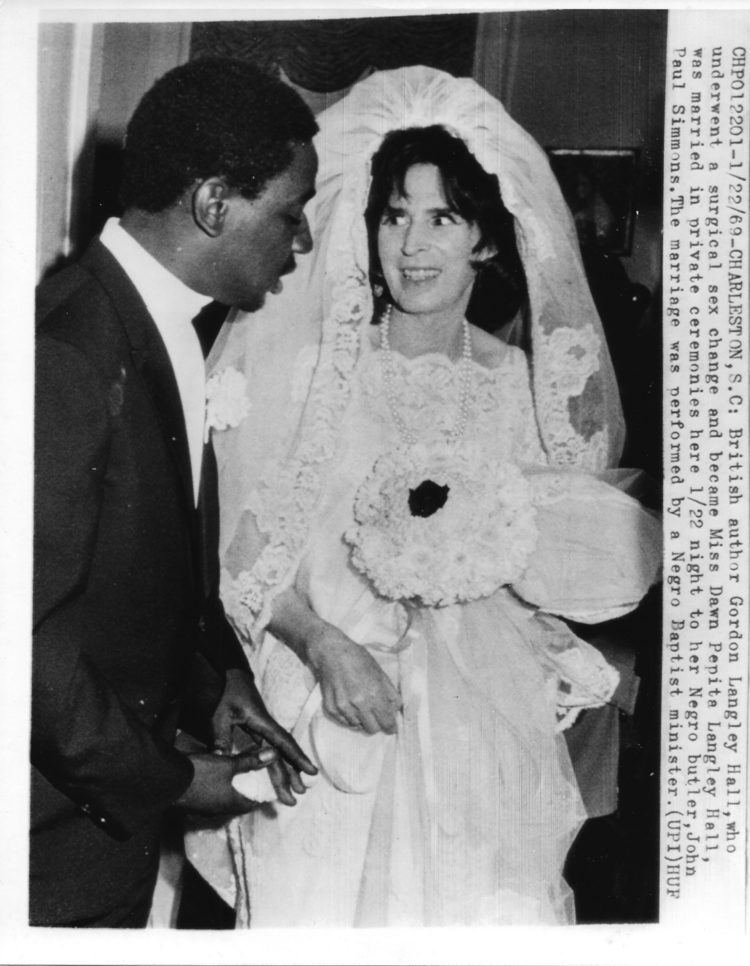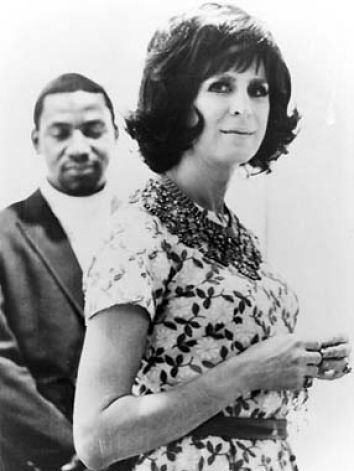Occupation Biographer, essayist Language English | Name Dawn Simmons Role Author | |
 | ||
Spouse John-Paul Simmons (m. 1969–1982) Children Natasha Margienell Manigault Paul Simmons, Books Dawn, a Charleston legend Similar People Margaret Rutherford, Stringer Davis, Robert Flemyng | ||
Dawn Langley Pepita Simmons (probably 1922 – 18 September 2000) was a prolific English author and biographer. Born as Gordon Langley Hall, Simmons lived her first decades as a male. As a young adult, she became close to British actress Dame Margaret Rutherford, whom she considered an adoptive mother and who was the subject of a biography Simmons wrote in later years. After sex reassignment surgery in 1968, Simmons wed in the first legal interracial marriage in South Carolina.
Contents
- Harborside History Dawn Langley Hall Simmons
- Early life
- Early career
- Move to South Carolina
- Marriage
- Later years and death
- In culture
- References

Harborside History: Dawn Langley Hall Simmons
Early life

Simmons's parents were servants at Sissinghurst Castle, the English estate of biographer Harold Nicolson and his novelist wife, Vita Sackville-West. Simmons was born in Sussex as Gordon Langley Hall to Jack Copper, Vita Sackville-West's chauffeur, and another servant, Marjorie Hall Ticehurst, before they were married. Although she claimed to have been born with an unusual condition that resulted in the swelling of her genitals with the result that she was mistakenly identified as a boy, Charleston author Edward Ball's book Peninsula of Lies (2004) states that she was born male.

As a child, Simmons was raised by her grandmother and at one point visited the castle and met Virginia Woolf, Sackville-West's lover. Woolf made Sackville-West the subject of the novel Orlando: A Biography, which bears a striking resemblance to Simmons' own life story.
Early career

In 1946 Simmons emigrated to Canada. Still living as a man, she crewcut her hair and became a teacher on the Ojibway native reservation on Lake Nipigon, experiences from which were translated into the best-selling Me Papoose Sitter (1955)—the first of many published books.
After a stint as an editor for the Winnipeg Free Press, Simmons moved back to England in 1947, to teach theatre at the Gregg School in Croydon, Surrey. She moved to the United States in 1950, and became the society editor for the Nevada Daily Mail in Missouri before moving to New York and working as the society editor of the Port Chester Daily Item. Shortly after moving to New York, Simmons met artist Isabel Whitney, beginning a friendship that would last until Whitney's death in 1962.
During this time, Simmons began a prolific writing career, including a series of biographies which covered personalities such as Princess Margaret (1958), Jacqueline Kennedy (1964), Lady Bird Johnson (1967), and Mary Todd Lincoln (1970) among many more. While living in Whitney's New York townhouse in the 1950s, Simmons was introduced to Margaret Rutherford and her husband Stringer Davis. Rutherford, interested in meeting Simmons to discuss a role in a possible adaptation of Me Papoose Sitter, became enamored with the young author and she and Davis agreed to serve as unofficial adoptive parents. Subsequently, Simmons and Whitney purchased a house in Charleston, South Carolina, though Whitney would die two weeks later, leaving Simmons the house and $2 million.
Move to South Carolina
The mansion Simmons purchased with Whitney, was located in the Ansonborough neighbourhood of Charleston, a neighbourhood known for housing the city's queer elite. Simmons began restoring the house, and designed the interior with early American antiques and furniture by Thomas Chippendale. Her pursuit of Chippendale pieces brought her into contact with Edward Ball, a journalist who owned a Chippendale commode and who would later write a biography about her.
In her autobiographical books, Simmons said she was born intersex with ambiguous genitalia, as well as an internal uterus and ovaries, and was inappropriately assigned male at birth. Simmons underwent sex reassignment surgery at Johns Hopkins Hospital in 1968, carried out by Dr. Milton Edgerton. In Ball's Peninsula of Lies, he disputes Simmons claim that she was intersex, suggesting instead that Simmons had male genitalia and was unable to bear children.
Marriage
Simmons legally changed her name to Dawn Pepita Langley Hall, and became engaged to John-Paul Simmons, then a young black motor mechanic with dreams of becoming a sculptor. Their marriage on 21 January 1969 was the first legal interracial marriage in South Carolina, and the ceremony was carried out in their drawing room reportedly after threats to bomb the church. After a second ceremony in England, the crate containing their wedding gifts was firebombed in Charleston, and Simmons received a ticket the next day when the charred remains were obstructing a sidewalk.
On 17 October 1971, her daughter, Natasha Margienell Manigault Paul Simmons, was born, in Philadelphia, Pennsylvania. Ball claims to have been told by John-Paul Simmons that Natasha was his child from another relationship, although "Natasha fervently believed Dawn was her mother".
After an intruder raped Simmons and broke her arm, the family moved to Catskill, New York.
Later years and death
In 1982, she divorced John-Paul Simmons, who had been abusive and suffered from schizophrenia. After spending several years in Hudson, New York, she moved in with her daughter and three grandchildren, who had returned to Charleston. In 1985, while back in Charleston, Simmons was featured as an extra in several scenes of ABC's miniseries North and South.
In her final years, Simmons developed Parkinson's disease, and died at her daughter's home on 18 September 2000.
In culture
In the 1987 film Withnail and I, set in 1969, the character Marwood reads a tabloid newspaper article about Gordon Langley Hall, entitled "I Had to Become a Woman". Author Jack Hitt profiled Simmons in a 1996 episode of This American Life titled "Dawn". Hitt, a native of Charleston, had grown up down the street from Simmons. From interviews, including with Simmons, Hitt assembled stories of her transsexuality, interracial marriages in the South, her rumoured voodoo powers, and rumoured hosting of a full-fledged debut for her chihuahua. Hitt expanded the piece for publication in the October 1998 GQ.
